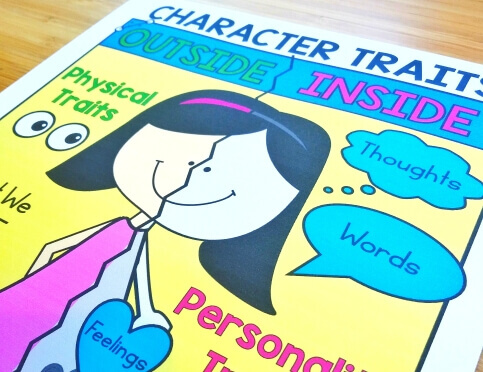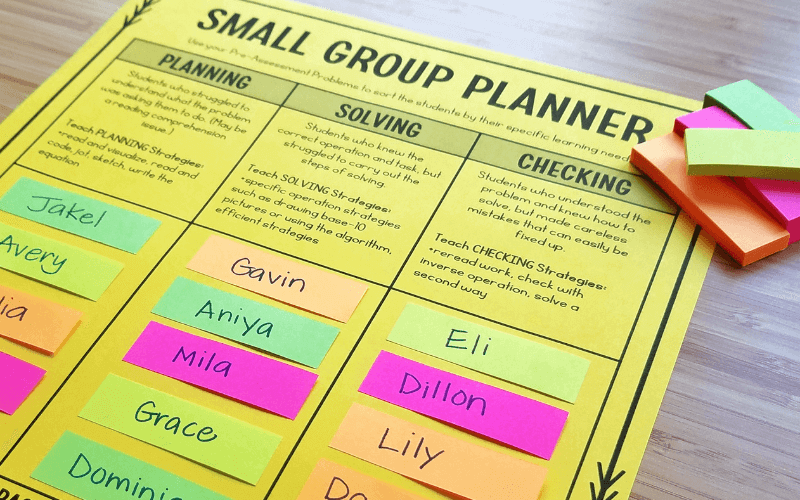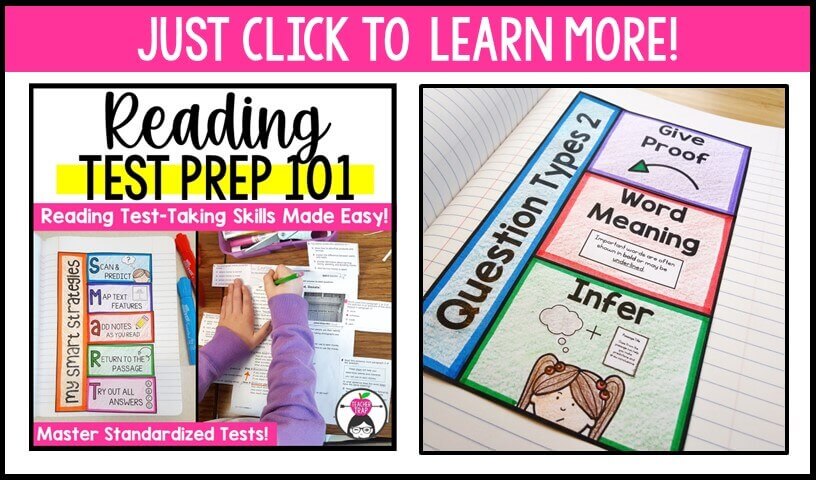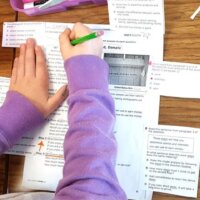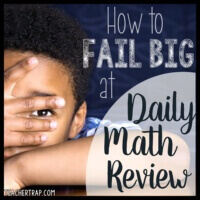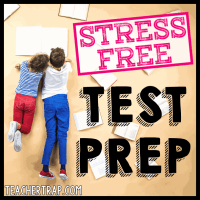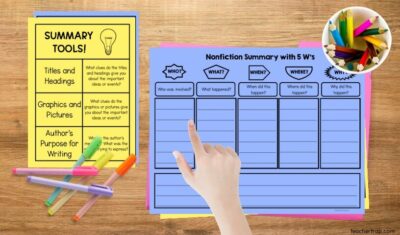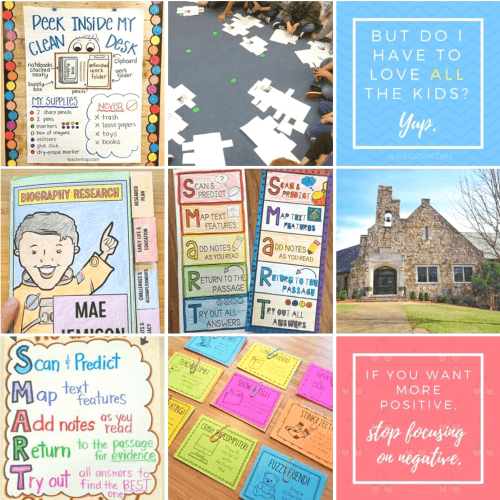Just talking about standardized testing can make some teachers (and students) feel ill, but these dreaded tests don’t have to be so painful! You can help students prepare in fun and meaningful ways that build lifelong learning habits and make students feel confident and ready. Learn how to prepare students for standardized testing success without all the stress and pressure!

1. Mindset Matters with Standardized Testing
If you want your students to be successful test-takers, start with their mindset! So many children believe that standardized testing will be HARD and PAINFUL and SCARY. Especially in the elementary grades, when these type of big tests are new, students may have problematic beliefs that lead to stress, anxiety, or even giving up.
Children must believe they are capable and prepared, and must have a positive understanding of the purpose of the testing. Even if you feel stress as the teacher, you don’t want to pass that on to your students.
To counter these beliefs, look for opportunities to change the language used when talking about these tests.
Changing Teacher Language:
OLD: I don’t like standardized testing either, but we have to take the test.
NEW: It’ll be fun to have the chance to show off what you know. I love a good challenge!
OLD: I hope you’re paying attention to this review, because the test is going to be WAY harder than you think.
NEW: Our reviews help keep your learning fresh! You are going to be so ready for this test!
OLD: This test tells us if you get to move to the next grade, so take it seriously.
NEW: We can use this information to see what I’ve taught well, and what you’re still learning.
We want our students to feel relaxed and ready, not hopeless and afraid. Get them excited for the challenge and believing they are capable!
2. Standardized Testing is a Genre
The second key to success on state tests is helping students get familiar with testing as a genre. Kids who understand the format, language, and types of questions on a test will perform better!
Each year, spend a few days looking at examples of released state tests (or questions) to uncover the “secrets” of the test and to think about the difference in author’s purpose and students’ goals.
In Math, give students a copy of a state-released test. (Texas offers full released tests on the TEA website if your state does not have this, although using your own state’s is best!) Have students sort the questions into categories, notice the vocabulary used, and get a feel for the level of challenge.
For Reading, compare reading test passages to real books, noticing similarities and differences in format, vocabulary, and the author’s purpose for writing. Identify the common types of questions we can expect to see, such as main idea questions, vocabulary questions, and summary questions. Look at text features in the test and discuss their purposes.
In my Reading Test Prep Strategies blog post, I share the specific strategies I teach to help students attack a reading test strategically. Students must understand that tests are a very specific type of text and know how to use those unique features to their advantage.
By spending some time “taking apart” the tests, students will feel more confident and prepared. The tests won’t seem so BIG and SCARY, and they’ll have better strategies for reaching their goals.
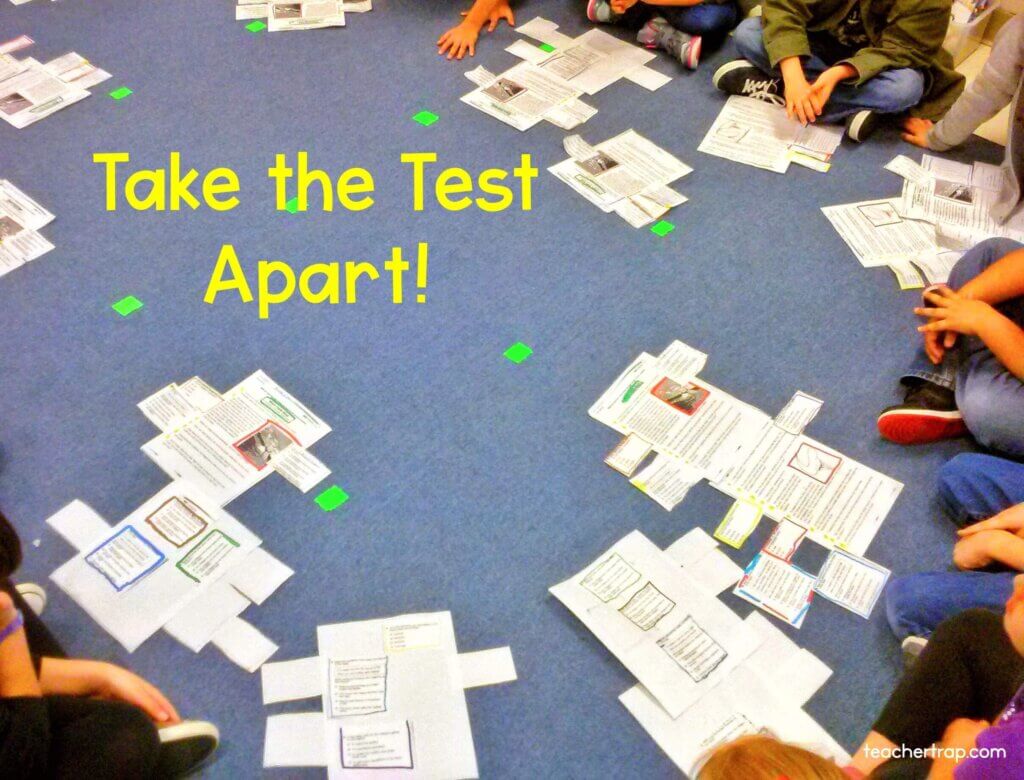
3. Standardized Testing Review in Elementary
We all know the importance of review before a big test, but if YOU are bored during your review lessons, then so are your students! If you look around the room and notice a lot of wandering eyes or fidgeting bodies, it’s time to make some adjustments. The third key to standardized testing success is providing engaging review.
Review should be interactive, collaborative, and hands on. There are lots of ways to make review engaging and meaningful, as I wrote about in Standardized Test Prep Tips. Look for ways to include discussion, movement, and quick feedback:
- Have partners or teams discuss and then prove their answers
- Make it hands-on (color-coding, sorts, matching games, etc.)
- Give immediate feedback (students write on desks or whiteboards, hold up cards, etc. so you can see how they’re doing)
- Use interactive technology (apps like Kahoot or Quizlet)
Plan your review sessions strategically, targeting the most commonly tested skills or identified areas of need.
How to Prepare for Standardized Reading Tests
If you working prepare 3rd, 4th, or 5th graders for their state reading tests, start with Powerful Reading Test Prep Strategies That Work for Elementary Students or check out Reading Test Prep 101.
There are so many engaging ways to help students feel prepared for standardized testing that don’t require ongoing passage practice or tedious review!
I’d love to hear your tips and ideas for helping students find success with standardized tests! Comment below and share your words of wisdom or questions!







